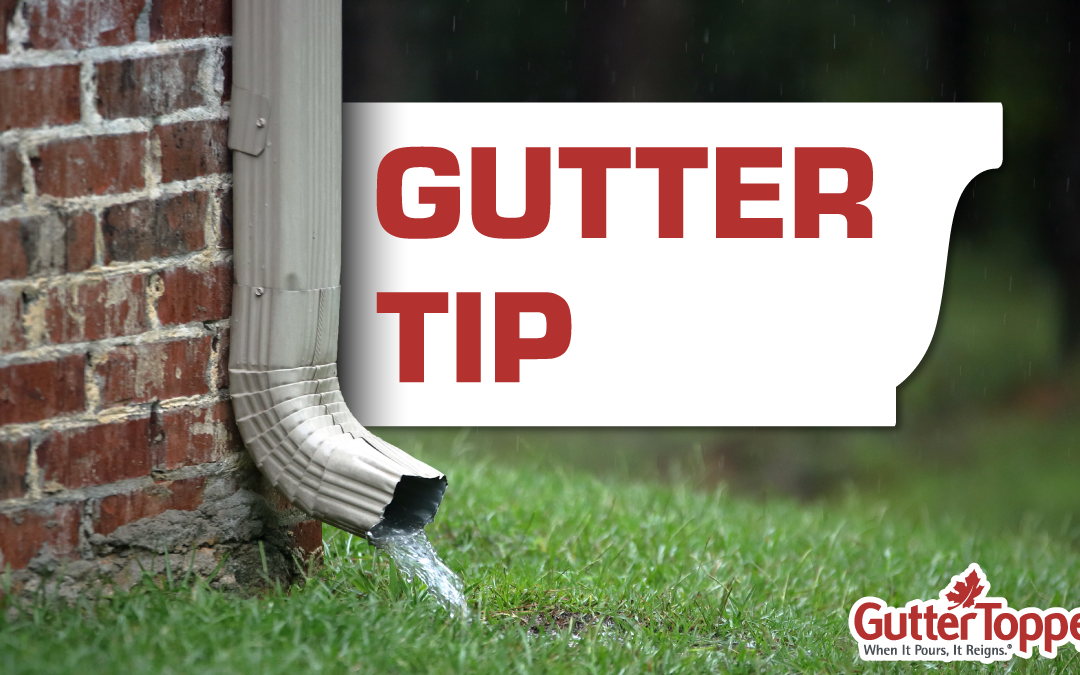Although gutters are a crucial part of every home’s rainwater management system, downspouts are equally important and should not be overlooked. The primary function of a downspout is to carry rainwater and melted snow from your gutters safely to the ground and away from your home’s foundation.
This process helps prevent potential water-related issues, such as flooding, soil erosion, and damage to your home’s structure and landscaping. However, without proper installation and regular maintenance of your downspouts, you may be putting your property at risk.
So, let’s explore critical maintenance tips to keep your downspouts in optimal condition all year round. We’ll also see why investing in a high-quality gutter protection solution can contribute to a healthier home and a long-lasting, effective gutter system.
Key Factors for Proper Downspout Installation
To maximize the efficiency of your gutter system and protect your home from water damage, it’s crucial to ensure your downspouts are installed correctly. Here are some essential factors to consider for proper downspout installation:
- Downspout Diameter: The diameter of your downspout should be proportional to the size of your gutters and the roof area they serve. Larger roofs may require larger downspouts to handle increased water volume during heavy rainstorms.
- Downspout Length: The length of your downspout should extend at least four to six feet from your home’s foundation, ensuring water is directed well away from your property. This helps prevent foundation damage, soil erosion, and flooding.
- Downspout Extensions: Downspout extensions can be added to help divert water even further from your foundation. These can be flexible or rigid, depending on your preferences and landscape requirements.
- Downspout Positioning: Proper positioning of downspouts is crucial to prevent water damage to your home. Ideally, they should be placed at the corners of your house and at intervals no more than 40 feet apart along the gutter run.
Understanding the Importance of Downspout Maintenance
Just like your gutters, your downspouts require regular maintenance to ensure they continue to function optimally. Here are some essential tips for maintaining your downspouts:
- Inspect and Clean Regularly: Even if your gutters are fitted with gutter covers, it’s essential to make a routine check on your downspouts. Inspect them for debris or signs of wear, and clean them out as needed to ensure proper water flow.
- Check for Damage: Look for any signs of damage, such as cracks, rust, or loose connections. Repair or replace damaged downspouts as soon as possible to prevent further issues.
- Monitor Water Flow: During heavy rainfall, observe your downspout to ensure water is flowing freely and being directed safely away from your foundation. If you notice any issues, address them promptly.
The Connection Between Gutter Guards and Downspout Maintenance
Investing in a high-quality gutter protection system can play a significant role in reducing your downspout maintenance needs. Gutter guards can help prevent debris from entering your gutters, leading to clogs in your downspouts.
Here are some of the benefits of installing gutter covers like Gutter Topper®, Leaf Terminator™, Needle Guard™, Versatile Solution™, and The Solution®:
- Reduced Debris: Gutter covers keep leaves, twigs, and other debris out of your gutters, ultimately reducing the risk of blockages forming in your downspouts.
- Less Maintenance: With gutter covers in place, you’ll need to clean your gutters and downspouts less frequently. This can save you time, energy, and significantly reduce the risk of injury from climbing a ladder.
- Improved Water Flow: Gutter covers help maintain a consistent flow of water through your gutters and downspouts, reducing the likelihood of water pooling around your home’s foundation.
Choosing the Right Downspout Material for Your Home
There are several materials commonly used for downspouts, each with its own advantages and disadvantages. When selecting the best downspout material for your home, consider the following:
- Aluminum: Aluminum downspouts are lightweight, durable, and resistant to rust. They are available in various colors to match your home’s aesthetic and are relatively easy to install and maintain.
- Vinyl: Vinyl downspouts are inexpensive, lightweight, and resistant to rust and corrosion. However, they may not withstand extreme weather conditions as well as other materials.
- Copper: Copper downspouts can add a touch of elegance to your home. They are highly durable and naturally resistant to rust and corrosion. However, they are also more expensive than other materials and may require professional installation.
- Galvanized Steel: Galvanized steel is a durable and long-lasting material for downspouts but is prone to rust over time. Consider upgrading to stainless steel for the added benefit of rust resistance.
Safeguard Your Home with Proper Downspout Installation and Maintenance
A well-designed and properly maintained downspout system is vital for protecting your home from water damage, soil erosion, and foundation issues. By ensuring your downspouts are installed correctly, regularly inspected, and kept clean, you can safeguard your home and rest easy knowing you have taken the necessary steps to keep your property safe and dry.
If you’re looking for expert advice and high-quality gutter protection solutions, our team is here to help you find the perfect Gutter Topper product for your needs. From Gutter Topper® to Leaf Terminator™, Needle Guard™, Versatile Solution™, and The Solution®, we have the solutions you need for a healthy, functioning gutter system. Contact us today to discuss your downspout and Gutter cover options.

